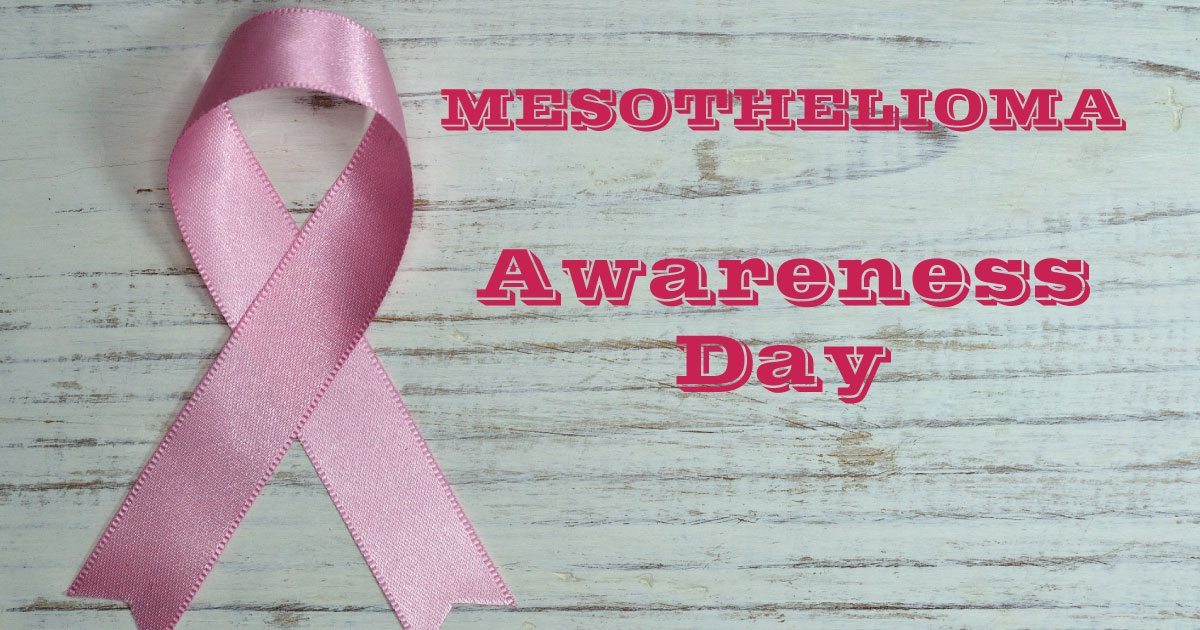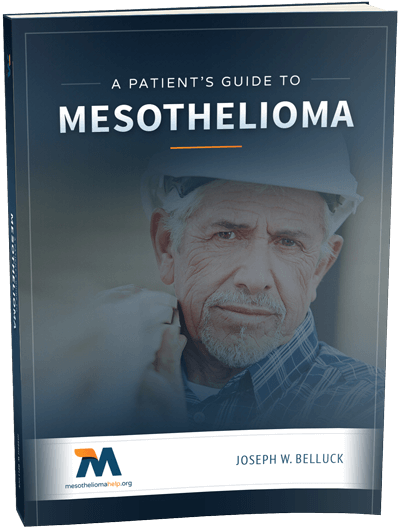Category: Mesothelioma

35th Anniversaries of NORD and The Orphan Drug Act
Many mesothelioma patients may not know that every day the National Organization for Rare Disorders has a team of people fighting for them. NORD was established in 1983 to improve the lives of individuals and families affected by rare diseases. This month the organization announced it will be spending 2018 marking 35 years of advocacy.
Not coincidentally, the Orphan Drug Act, that provides incentives to the pharmaceutical industry to invest in developing therapies to help small patient populations, has also reached the 35-year milestone. The Act was created and passed by the hard work of an ad hoc coalition of parents of children with rare diseases who lobbied Congress and the medical and pharmaceutical communities to call attention to rare diseases. After the successful passage of the law, the coalition formed NORD.
“The advances in diagnosis, treatments and care for patients with rare diseases have been remarkable, but we still have many challenges ahead of us,” said Peter L. Saltonstall, President and CEO of NORD, in a Jan. 4 press release announcing the milestone. “The Orphan Drug Act and the creation of NORD brought national attention to rare diseases. The joint anniversaries are an appropriate time for us to recognize the progress made and rededicate ourselves to the needs of the patient community.”
A disease is designated as rare or orphan when less than 200,000 Americans are affected by the disease at any given time. Over 7,000 diseases affect close to 30 million Americans. Mesothelioma is responsible for approximately 3,000 new cases of cancer each year in the U.S. Although there is no cure for mesothelioma, it can be treated with varying degrees of success through the use of surgical procedures, chemotherapy and radiation.
While there is ongoing research to find new treatments or a cure for these orphan diseases, research requires significant amounts of time and money. Since many of these illnesses affect so few people, researchers and pharmaceutical companies do not find it beneficial to expend the time, effort or money to find treatments and cures. Although the Orphan Drug Act has helped in the development of some treatments, still less than 500 of the orphan diseases have an approved treatment, according to NORD.
Some of the milestones NORD highlights from its 35-year history include:
- Named a 4-star charity by Charity Navigator, one of the 100 Best Charities by Worth Magazine, and “Charity of the Week” by The Week Magazine;
- In at least two instances, NORD’s rare disease research grant program has resulted in FDA-approved orphan therapies;
- NORD established a Natural History Study program and entered into a cooperative agreement with FDA to further rare disease research.
Since inception of the Orphan Drug Act, the FDA has approved more than 600 orphan products and 4,000 orphan drug designations. The Orphan Drug Act, according to NORD, is credited with helping to drive innovation in cancer treatment and gene therapies.
“The Orphan Drug Act is just as important today as it was in 1983,” Saltonstall said. “This year, we will be saluting the progress made to date, we will also be focusing on the fact that much remains to be done.”

Improving Immune System’s Memory May Lead to New Mesothelioma Treatment
Mesothelioma patients often lose ground when fighting back against the deadly cancer due to a compromised immune system. Immunotherapy is one way oncologists and researchers use to awaken the immune system so it can successfully fight the cancer. Now, researchers report they may be able to stimulate the immune system’s ability to “remember” infections leading to new treatments that may better help fight disease.
Researchers from Monash University in Australia report they have discovered a “novel molecular ‘blueprint’” that could be the key to immunological memory, according to a Dec. 20 press release from Monash University’s Biomedicine Discovery Institute. The team found that when the immune system fights an infection, the B and T cells create memory cells. This memory is how immunity is developed and how vaccines work by mimicking that immunity.
B cells generate antibodies, whereas T cells are known as killer cells and destroy the invading sick cells. Using a strain of the flu, the researchers found the T cells, that the team called hit men, “are genetically wired to behave” the way they do. This finding broke new ground in understanding the changes T cells undergo when fighting an illness.
“What we found is there’s a specific sort of wiring that seems to characterise this type of immunological memory – it’s like an electrical circuit,” Professor Turner said. “We were able to identify specific ‘switches’ that are used in parts of the genome that actually give T cells their function.”
Mesothelioma, a signature cancer of asbestos, is extremely aggressive, and the cancer cells continue to grow and multiply as the patient’s immune system is compromised. Finding a way to wake up the immune system is critical for extending survival. Immunotherapy has been used successfully in some mesothelioma patients, however, this research points to another way to engage the immune system. In fact, Turner said, the “blueprint could serve as a benchmark for research, and potentially be used to hone and personalise therapies.”
Understanding immunological memory may help them improve existing treatments or create new ones that use the immune system to fight cancer, the researchers concluded.
The team will continue this research and reports the next step is to use the human influenza virus next.
Read the full study in the Dec. 19, 2017, issue of Cell Reports.

Libby, Montana Mesothelioma Doctors Contribute Knowledge to Medical Journals
The doctors at Libby, Montana’s Center for Asbestos Related Disease (CARD) know a thing or two about mesothelioma. The town is home to a vermiculite mine blamed for widespread contamination from asbestos exposure and for hundreds of cases of mesothelioma, and CARD has been the hub for care and screening of many of the patients. Now, the medical team is sharing their knowledge of this deadly disease through collaboration on articles for scientific journals.
Dr. Brad Black and Dr. Gregory Loewen, both physicians at CARD, were among the authors in two separate studies published recently in the peer-reviewed journals Inhalation Toxicology and the Journal of Occupational and Environmental Medicine (JOEM), according to a Dec. 29 article in The Western News. The two provided their expertise into the studies looking at the pulmonary function of miners at Libby’s vermiculite mine.
In the study of 256 individuals who worked at the mine for a minimum of six months, the researchers concluded “eighty-seven percent of miners exposed to Libby Amphibole had pleural abnormalities on CT [computed tomography].” The study was published in JOEM.
“… most doctors probably don’t know about this unique type of asbestos related disease and wouldn’t be able to recognize it in their patients if they didn’t hear about it,” said Dr. Black on why the study is important.
The W.R. Grace vermiculite mine and mill located in Libby, closed since 1990, was found to have an asbestos deposit in the mine and is the site of significant asbestos exposure. According to reports, nearly 3,000 residents and former miners have been diagnosed with an asbestos-related disease, and over 400 have died from mesothelioma. Contamination from the site led the federal government to declare Libby a health emergency.
Asbestos is a known carcinogen and is proven to cause mesothelioma, a serious cancer caused by breathing in the asbestos fibers that then become lodged in the thin membrane that lines and encases the lungs.
The second study followed one individual who worked at the mine from 1969 to 1990 and had no other known exposure to asbestos. The person developed “asbestos-like” pathological features and eventually an adenocarcinoma. According to the authors, “This is to our knowledge the first time such an extensive evaluation has been conducted in a vermiculite miner from Libby, Montana.”
About CARD
CARD’s primary goal is to provide specialty healthcare and screening to those affected by Libby Amphibole Asbestos. CARD’s secondary goal is to stimulate research from around the country to gain further understanding of disease mechanisms, improve early disease and cancer detection and intervention, and develop effective health management strategies in hope of finding answers to improve health outcomes for individuals and communities.
Find out more about the Center for Asbestos Related Disease on its website.
Read the studies in the Dec. 1 issue of the Journal of Occupational and Environmental Medicine and in the Oct. 17 issue of Inhalation Toxicology.
Sources:
- Center for Asbestos Related Disease
http://www.libbyasbestos.org/ - Inhalation Toxicology
http://www.tandfonline.com/doi/abs/10.1080/08958378.2017.1372536 - Journal of Occupational and Environmental Medicine
http://journals.lww.com/joem/pages/default.aspx
- The Western News
http://www.thewesternnews.com/front_page_slider/20171229/libby_asbestos_clinic_contributes_research_to_two_journals

How Paralegals Help with Your Mesothelioma Case
Paralegals can be found in every area of the law. One of the largest areas to utilize paralegals, though, is the personal injury field. Personal injury law is the field of law devoted to helping those who have been injured unjustly to seek compensation. For those who have been diagnosed with mesothelioma after being exposed to asbestos, compensation can be sought from the companies that failed to warn them of the danger.
Paralegals who work in the complex asbestos litigation field assist the attorneys who fight for the rights of victims who have been diagnosed with mesothelioma, asbestos lung cancer, asbestosis, and other asbestos diseases. These paralegals do a lot of behind-the-scenes work to help build the claim for maximum compensation, whether through litigation or asbestos bankruptcy funds.
Although many asbestos cases end in settlements, there are also many that go to trial, requiring a strong and experienced team of attorneys, paralegals, and other professionals. Paralegals assist attorneys in all aspects of asbestos litigation, from initial client interviews to appeals.
Common tasks performed by a paralegal for a mesothelioma case include:
- Interviewing clients, doctors, medical specialists, and former co-workers or fellow veterans
- Gathering medical records and other supporting evidence, such as documentation to pinpoint where and when the patient was exposed to asbestos
- Aiding the attorney in determining what types of damages a plaintiff may be entitled to recover
- Communicating with the client and insurance companies
- Filing legal documents with the court
- Locating expert witnesses to interview
- Maintaining a calendar of pretrial and trial order deadlines
- Preparing pretrial and trial motions
Asbestos litigation paralegals are specifically trained to work in this area of the law. Because of the complexities of mesothelioma cases, these legal professionals must possess a special set of skills and knowledge to assist attorneys and, ultimately, clients.
Ways paralegals help mesothelioma patients and their families pursue maximum compensation:
Client Services
Because asbestos attorneys are very busy and cannot perform every function necessary to successfully take on a case, paralegals provide extensive support involving client services. Paralegals help interview and screen potential clients, keep current with case status, and interact with clients and their families in a meaningful way to ensure their needs are being met.
Drafting
Asbestos paralegals must be skilled in drafting and submitting legal documents related to mesothelioma claims. Although the attorney ultimately reviews these documents, the paralegal spends the time drafting them and ensuring they are submitted on time.
Analysis
Paralegals must have specific training or experience in order to handle the medical aspects of a mesothelioma case. The paralegals will ascertain which medical records and bills are needed from the patient and determine what future cost projections or experts are needed. Many paralegals in this field are familiar with how asbestos diseases affect patients. This knowledge allows paralegals to prepare medical chronologies, medical expense itemizations, deposition summaries, and demand packages.
Trial Preparation
Asbestos litigation paralegals play an important role in trial preparation. They perform a variety of tasks to assist attorneys, including jury selection preparation, opening and closing statements, and witness outlines. Paralegals also determine which exhibits will be utilized and ensure that they are properly prepared for trial.
Trial
One of the paralegal’s main jobs is assisting the attorney(s) with the entire voir dire process, including taking notes and helping the attorney strike or select jurors. Once the trial is under way, paralegals pull and pass exhibits to the attorney, act as a liaison to the client, communicate with the bailiff or court reporter if issues arise, bring witnesses into the courtroom when it is their turn to testify, and act as a second set of eyes and ears in the courtroom.
Although this is not an exhaustive list of everything an asbestos litigation paralegal does to assist attorneys in mesothelioma cases, it certainly shows that paralegals play a pivotal role in helping clients pursue maximum compensation for their injuries. If you would like to learn more about the paralegal profession, visit Fremont College. The school’s website offers a number of resources for those looking for a career as a paralegal.
An ABA accelerated paralegal certificate program that allows you to finish your schooling in just 15 months. Robust education that speaks to essential skills needed for those looking to be successful in the legal field. Lean more about the Paralegal Studies program by visiting http://fremont.edu/ For more information, please visit us at www.fremont.edu or call us at 1-800-373-6668 / 1-800-FRE-MONT

September 26 Is National Mesothelioma Awareness Day
Each year, the mesothelioma community across the nation comes together for Mesothelioma Awareness Day, a time devoted to raising public awareness about the life-threatening cancer and its cause ─ exposure to asbestos.
Patients, family members, friends, advocates and health care professionals are encouraged to share their personal stories, struggles and inspiration in order to bring attention to the disease and further the search for a cure.
When Is Mesothelioma Awareness Day?
Mesothelioma Awareness Day is held on Sept. 26. In 2018, September 26 falls on a Wednesday.
In an effort to expand the impact of Mesothelioma Awareness Day, advocates have encouraged patients, caregivers, family and friends to participate in Mesothelioma Awareness Week surrounding Sept. 26, as well as Mesothelioma Awareness Month throughout September.
Mesothelioma Awareness Day History
In 2004, the Mesothelioma Applied Research Foundation organized the original Mesothelioma Awareness Day. Since then, the national nonprofit organization has continued to build momentum by promoting the day as a time for all those touched by the cancer to talk about its impact.
In 2010, Congress joined the effort by establishing Mesothelioma Awareness Day as a time for the nation to recognize that thousands of Americans are diagnosed with the preventable cancer each year. In fact, despite its designation as a known carcinogen, asbestos is still not banned in the United States, and Americans are still at risk of exposure.
The Importance of Awareness Day
The National Mesothelioma Awareness Day resolution asks that the President of the United States issue a proclamation calling for all Americans, federal agencies and departments, state governments, local municipalities, organizations, and news media to properly observe the day.
The Congressional Declaration outlines these key facts about malignant mesothelioma as reasons for promoting awareness of the deadly asbestos cancer:
- Although workers who were exposed to asbestos on a daily basis over a long period of time are most at risk of developing mesothelioma, even short-term exposures can cause the disease. In fact, exposure to asbestos for as little as one month can result in mesothelioma 20 to 50 years later.
- Asbestos materials were used in the construction of virtually all office buildings, public schools, and homes built before 1975. Still today, asbestos is used in more than 3,000 products being sold in the United States.
- The National Institutes of Health reported to Congress in 2006 that mesothelioma is a difficult disease to detect, diagnose and treat.
- For decades, the need to develop treatments for mesothelioma was overlooked. Still today, even the best mesothelioma treatments usually have a very limited effect, with the expected survival time of 8 to 14 months.
- It is believed that many of the firefighters, rescue workers and police officers from Ground Zero on September 11, 2001, may be at increased risk of developing mesothelioma in the future due to asbestos exposure at the site.
Every year, about 3,000 people in the United States are diagnosed with mesothelioma. Around the world, an estimated 38,400 people die each year from the devastating asbestos illness.
Unfortunately, those numbers are not dwindling. Mesothelioma statistics indicate an increase in deaths in recent years, with an 8 percent increase in fatalities in the United States for the 10-year period that ended in 2015.
These facts point to the importance of Mesothelioma Awareness Day in educating people about the dangers of asbestos and promoting the need for continued research into more effective treatments.
Paint the World in Mesothelioma Awareness
Just as breast cancer is associated with the color pink, support for mesothelioma awareness is often represented by a colored ribbon. The mesothelioma awareness color is blue or pearl.
Friends and family members of patients typically don pearl or blue ribbons in a show of solidarity with their loved ones who are fighting the life-threatening disease.
The Mesothelioma Applied Research Foundation also encourages people to participate in its “Paint the World in Mesothelioma Blue” campaign to raise awareness by wearing blue and sharing photos of themselves on social media.
How You Can Show Support on Mesothelioma Awareness Day
Since its founding, the nonprofit Mesothelioma Applied Research Foundation has advocated for patients and families while coordinating fundraising events to support research efforts related to the disease. This national organization is committed to finding a cure for mesothelioma and ending the suffering it causes.
One way to show your support on Mesothelioma Awareness Day is to make a donation to the Meso Foundation. Your contribution will help fund the organization’s efforts to support mesothelioma patients and the ongoing search for a cure.
You may also choose to show your support by wearing (and asking others to wear):
- Mesothelioma awareness ribbons
- Mesothelioma awareness pins
- Mesothelioma awareness bracelets
- Mesothelioma awareness wristbands
- Mesothelioma awareness shirts
At Mesothelioma Help Cancer Organization, we aim to raise awareness year-round, in particular through our Mesothelioma Awareness Scholarship Contest. As part of this contest, students submit essays sharing their own experiences with mesothelioma as well as their efforts for raising awareness of the dangers of asbestos. We encourage the students to share their essays on social media to help spread the word.
Quick Facts to Share on Mesothelioma Awareness Day
- Asbestos is the only known cause of mesothelioma. It has also been shown to cause lung cancer.
- Asbestos was commonly used on Navy ships and in shipyards. Veterans account for approximately one-third of mesothelioma diagnoses.
- Industrial workers and construction workers are at an increased risk of developing mesothelioma and other asbestos diseases.
- Family members of those who worked with asbestos may have faced secondhand exposure through fibers brought home on clothing or skin.
- Although the U.S. government has safety regulations in place, it has not banned the use of asbestos.
- There is no safe level of asbestos exposure.
- Renovation projects on older homes and demolition of older buildings can put people at risk of asbestos exposure.
- Never try to remove asbestos materials on your own. Contact an asbestos abatement professional.
- Companies that made asbestos products understood the health risks but failed to warn the public.
- Mesothelioma patients and families may be entitled to compensation for damages due to asbestos exposure.
- Even if an asbestos company has gone out of business, funds may be available in a bankruptcy trust for mesothelioma victims.
Sources:
- Mesothelioma Applied Research Foundation
https://www.curemeso.org/get-involved/get-involved-events/mesothelioma-awareness-day - Make a Donation
https://www.curemeso.org/donate
Free Mesothelioma Patient & Treatment Guide
We’d like to offer you our in-depth guide, “A Patient’s Guide to Mesothelioma,” absolutely free of charge.
It contains a wealth of information and resources to help you better understand the condition, choose (and afford) appropriate treatment, and exercise your legal right to compensation.
Download Now